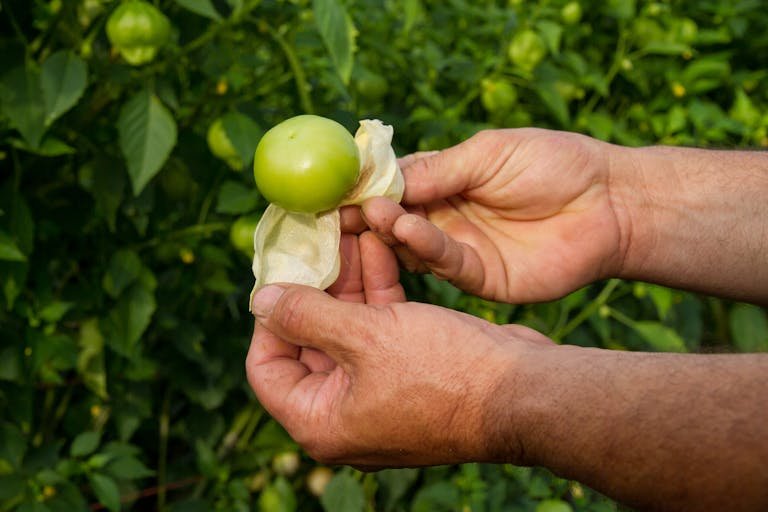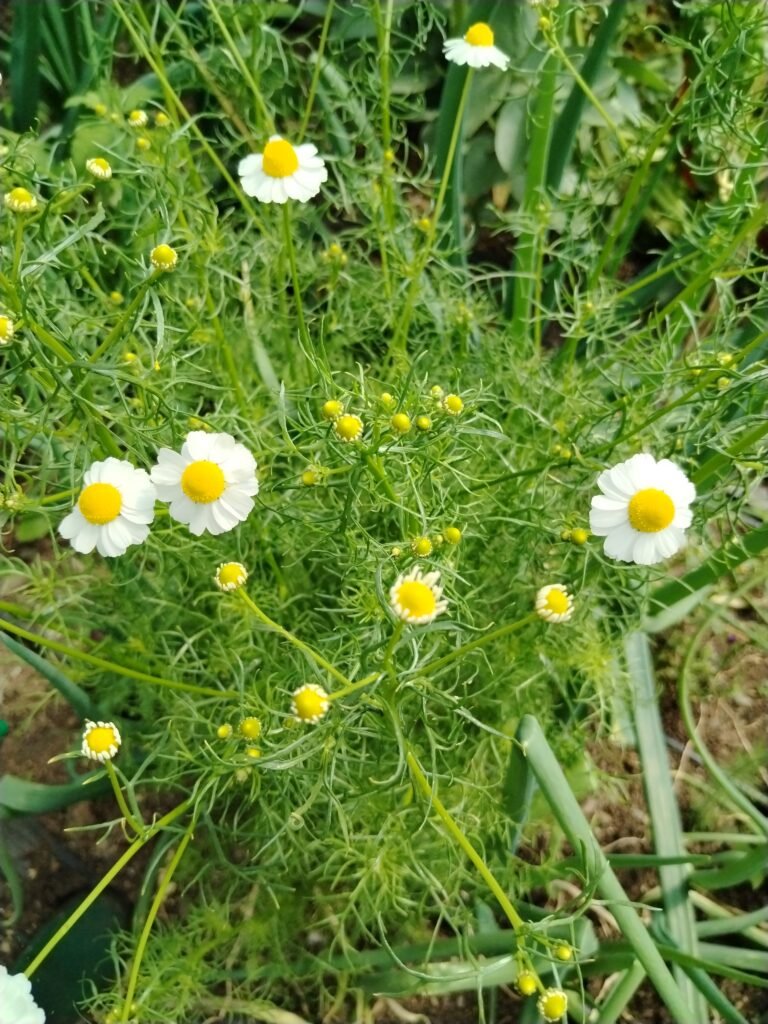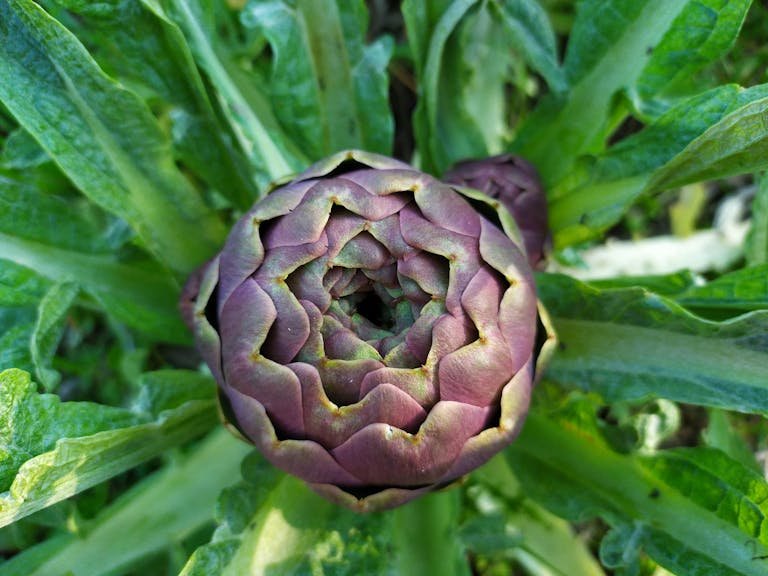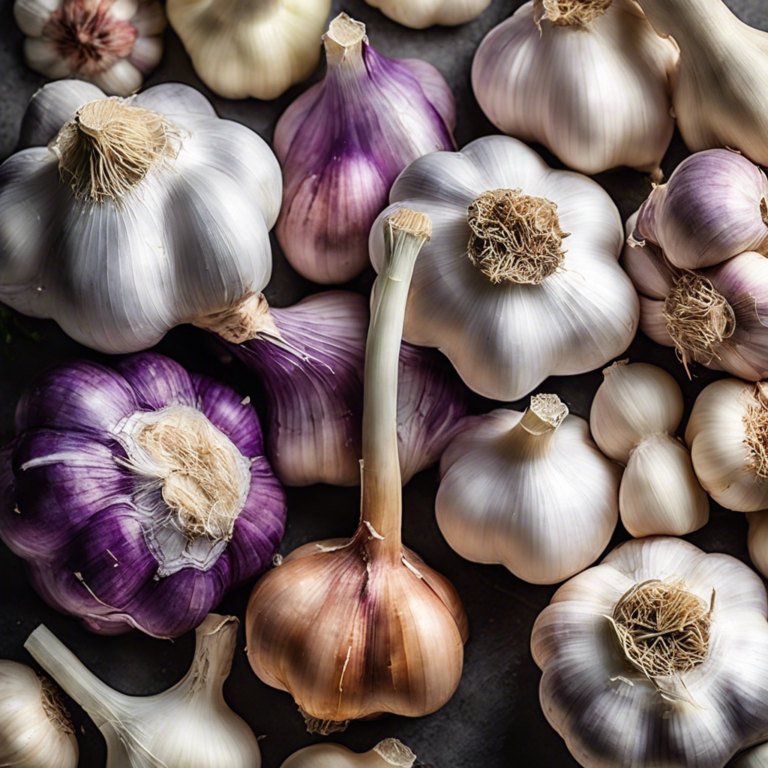
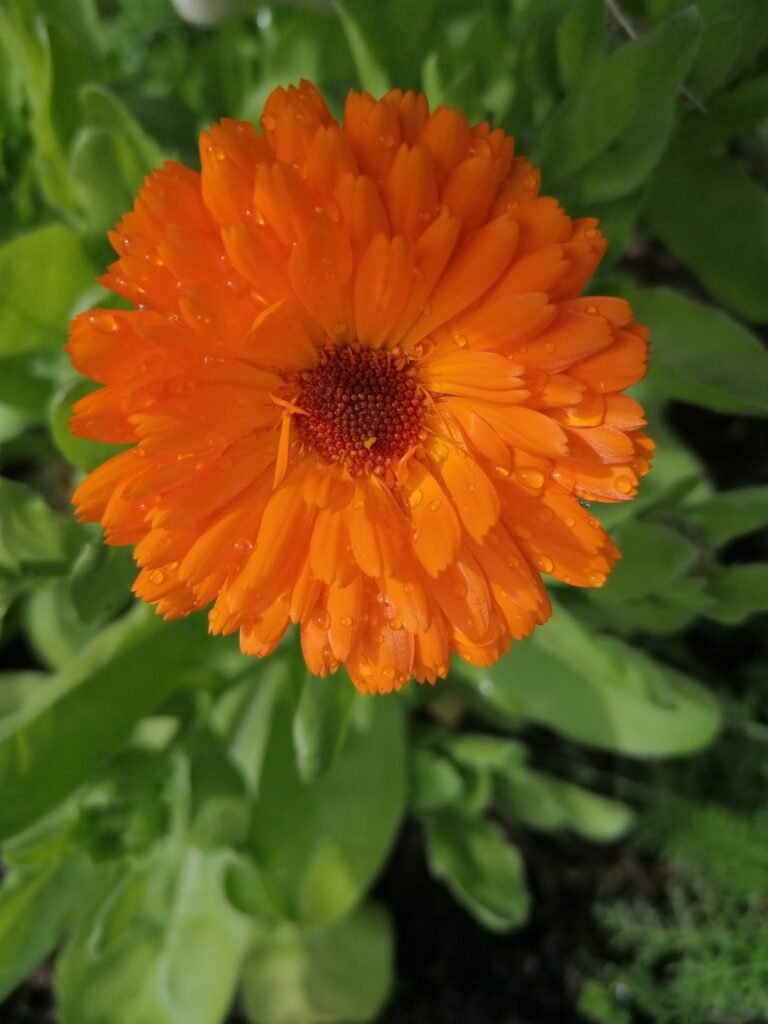
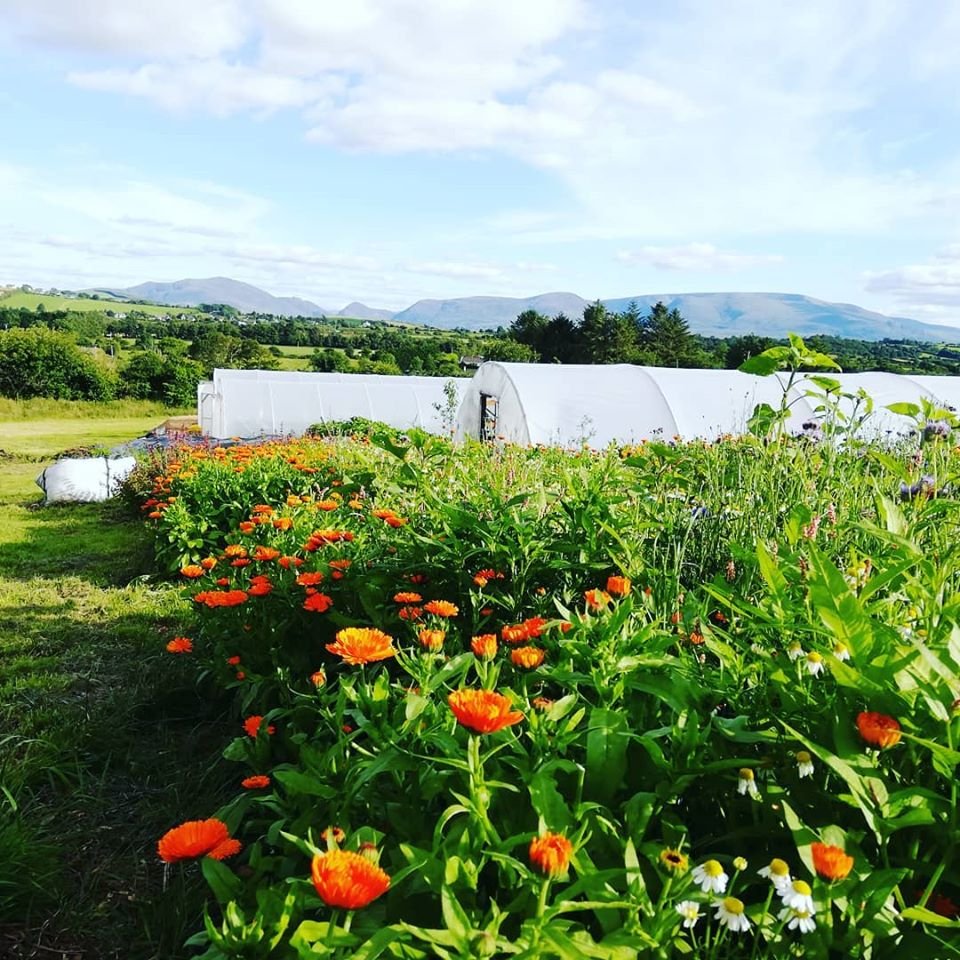
Let me tell you a secret—calendula isn’t just another pretty flower. These sunshine-colored superstars have been stealing the show for over 2,000 years (talk about plant longevity)! Ancient civilizations didn’t just admire them; they relied on calendula for everything from healing wounds to elevating their meals with a pop of golden color.
Fun fact: The name “Calendula” comes from the Latin word calendae, meaning “the first day of the month.” Why? Because these blooms are so dependable, they were nature’s very own calendar!
From Roman broths to medieval healing concoctions to today’s herbal balms and gourmet dishes, calendula has earned its title as the ultimate multi-tasking plant. I’ve been growing these golden gems for over a decade, and I can confidently say they’re the Swiss Army knife of the flower world—versatile, resilient, and always ready to impress.
Whether you’re a gardening newbie or a seasoned plant parent, this guide is your ticket to calendula mastery. We’re about to embark on a botanical adventure that will take you from seed to bloom, transforming you into a calendula cultivation pro.
Are you ready to fall in love with calendula? Let’s grow!
Some of the links in this post are affiliate links, including links to products on Amazon. This means if you click and make a purchase, I may earn a small commission at no extra cost to you. I only recommend items I genuinely love and believe could add value to your life. Thank you for supporting this blog—it helps keep the content free and full of ideas just for you!
Understanding Calendula Basics
Get ready to meet the rockstar of the flower world—calendula! This garden superhero, also known as pot marigold, is about to become your new plant obsession. There are two standout varieties: Calendula officinalis (the classic garden favorite) and Calendula arvensis (its smaller, wild cousin).
Imagine nature’s sunshine captured in flower form—vibrant orange, yellow, and apricot blooms that brighten up any space. Calendula officinalis grows tall at 12-24 inches, perfect for flower beds and companion planting, while C. arvensis stays compact at 6-12 inches, making it ideal for smaller gardens, raised beds, or containers.
And let’s talk resilience—this plant is tough as nails! Thriving in USDA hardiness zones 2-11, calendula is happy just about anywhere. Whether it’s tucked into a vegetable garden, lining a flower bed, or growing in our Irish tunnels (where it blooms nearly year-round!), calendula is the definition of a low-maintenance, high-reward plant. Full sun? Well-drained soil? Calendula says, “Bring it on!”
But wait, there’s more! These blooms are more than just eye candy. Calendula flowers are edible powerhouses, adding vibrant color and mild spice to salads and teas. And if you love natural skincare, this flower is your new best friend—it’s packed with anti-inflammatory, antiseptic, and skin-soothing properties. (Psst… check out 12 Amazing Calendula Skin Benefits You Need to Know to learn why we swear by it!) We even make our own handmade calendula balm—a must-have for anyone who loves plant-powered skincare.
Gardening bonus: Calendula is the impatient gardener’s dream. These little speedsters germinate quickly and start blooming in just 6-8 weeks! From late spring through the first frost, they’ll put on a non-stop flower show—especially if you keep up with deadheading.
Starting Calendula from Seed
Growing calendula from seed is like gardening on easy mode—seriously, these plants want to make you look good! Let’s break down the seed-starting secrets so you can get the earliest, healthiest blooms possible.
Timing is Everything
You’ve got two golden windows for planting:
- Spring Planting: If you’re in a cooler climate, wait until the last frost bids farewell (typically March to May). Direct sow the seeds and let the garden magic unfold.
- Fall Planting: If you live in a mild-winter region, this is your secret weapon. Plant between September and November, giving calendula time to establish a strong root system before winter. This means earlier, stronger blooms in spring!
Want to Fast-Track Your Flower Game?
Starting calendula indoors gives you a serious head start. 4-6 weeks before your last frost, grab some seed trays with humidity domes, fill them with a well-draining seed-starting mix, and gently nestle the seeds under a ¼-inch soil blanket. Keep the soil evenly moist—think damp sponge, not swimming pool.


The Germination Excitement!
Calendula seeds are enthusiastic growers—under the right conditions, they pop up in just 7-14 days. Instant gratification, anyone?
Outdoor Planting? Treat Your Soil Like a Five-Star Resort!
For direct sowing, give your soil some love before planting:
Mix in 2-4 inches of compost for nutrient-rich, well-draining soil.
Space seeds 12-18 inches apart so they have room to thrive.
Tuck seeds ¼ to ½ inch deep and gently water them in.
Sunlight Strategy
Calendula loves full sun, but it will tolerate partial shade while getting established. Think of it as garden flexibility.
The Payoff?
You’ll be rewarded with cheerful blooms in just 6-8 weeks—faster than most Netflix binges and way more rewarding!
Essential Growing Conditions for calendula
Calendula is a sun-loving powerhouse that thrives with at least 6 hours of direct sunlight per day. If you live in a hot climate, a little afternoon shade can help prevent the leaves from wilting and the flowers from fading too soon. But too much shade? That leads to leggy (the stem is long and skinny), weak plants with fewer blooms—so let them soak up the sunshine!
Soil Matters!
Calendula isn’t picky, but well-draining, nutrient-rich soil makes all the difference. It thrives in a slightly acidic to neutral pH (6.0-7.0), so before planting, grab a home pH test kit to check your soil’s balance. Too heavy or sandy? No problem—just mix in 2-4 inches of compost or aged manure to improve structure and fertility.
Another must? Avoid compacted soil—calendula hates it! Loosen the ground with a sturdy garden fork to ensure good root growth and drainage. This simple step helps prevent root rot and boosts plant health from the start.
Water Wisely
Calendula likes consistent moisture, but overwatering is a no-go. Aim to water deeply once or twice per week, delivering about 1 inch of water each time. Pro tip: Water at the base to keep foliage dry and prevent fungal diseases. During hot, dry spells, check the soil often—it should be moist but never soggy.
Temperature & Spacing for Success
Calendula is hardy and can handle temperatures as low as 40°F and as high as 90°F, but it truly thrives in the 60-70°F range. Too much heat or cold? That can stress the plant and slow flowering.
When it comes to spacing, give each calendula plant 12-18 inches to spread out. This keeps air flowing around the leaves, preventing disease issues. Growing in containers? Choose a pot at least 12 inches wide and deep to give the roots room to grow.
The Bottom Line?
Give calendula the right sun, soil, water, and space, and you’ll be rewarded with months of vibrant blooms—without the fuss!
Calendula Care & Maintenance
Calendula is easygoing, but a little care goes a long way in keeping it healthy and blooming non-stop.
Feeding for More Blooms
While calendula is low-maintenance, a little extra nutrition helps it thrive and flower abundantly. Apply a balanced organic fertilizer (5-5-5 or 10-10-10 NPK) every 4-6 weeks during the growing season. Prefer a natural boost? A 2-inch layer of aged compost or manure around the base works wonders!
Mulch Magic
A 2-3 inch layer of organic mulch—like shredded bark, straw, or leaves—keeps the soil moist, weed-free, and insulated. Check out this organic mulch to give your calendula the perfect growing conditions. Pro tip: Keep mulch a few inches away from the plant stems to prevent rot.
Deadheading & Pruning for More Flowers
Want non-stop blooms? Snip off spent flowers just above the nearest healthy leaves—this keeps the plant focused on flowering instead of setting seeds. A good pair of secateurs makes this quick and effortless! Also, trim leggy or damaged stems to keep your plants compact and tidy.
Common Calendula Pests & Problems
Even tough plants like calendula can run into issues. Here’s how to tackle the most common ones:
- Powdery Mildew? Treat with a baking soda spray or neem oil solution.
- Aphids & Spider Mites? Use insecticidal soap or a strong blast of water to knock them off.
- Preventative Care? Good air circulation + proper spacing + smart watering = happy, healthy plants!
The Bottom Line?
Follow these simple care tips, and your calendula will reward you with months of golden blooms—with minimal effort!
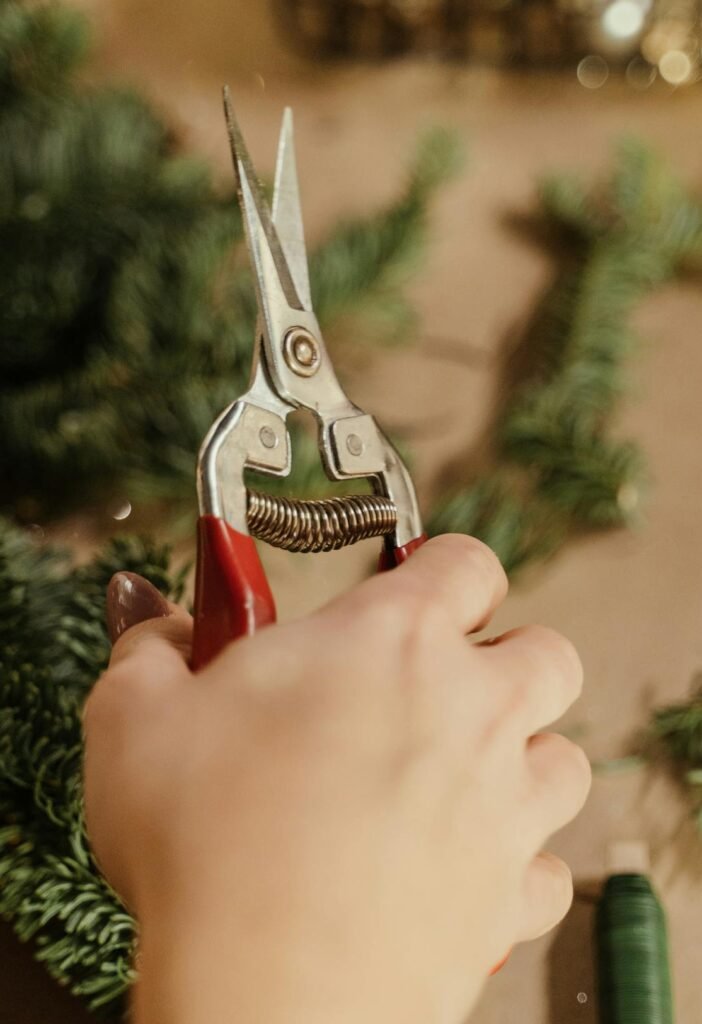
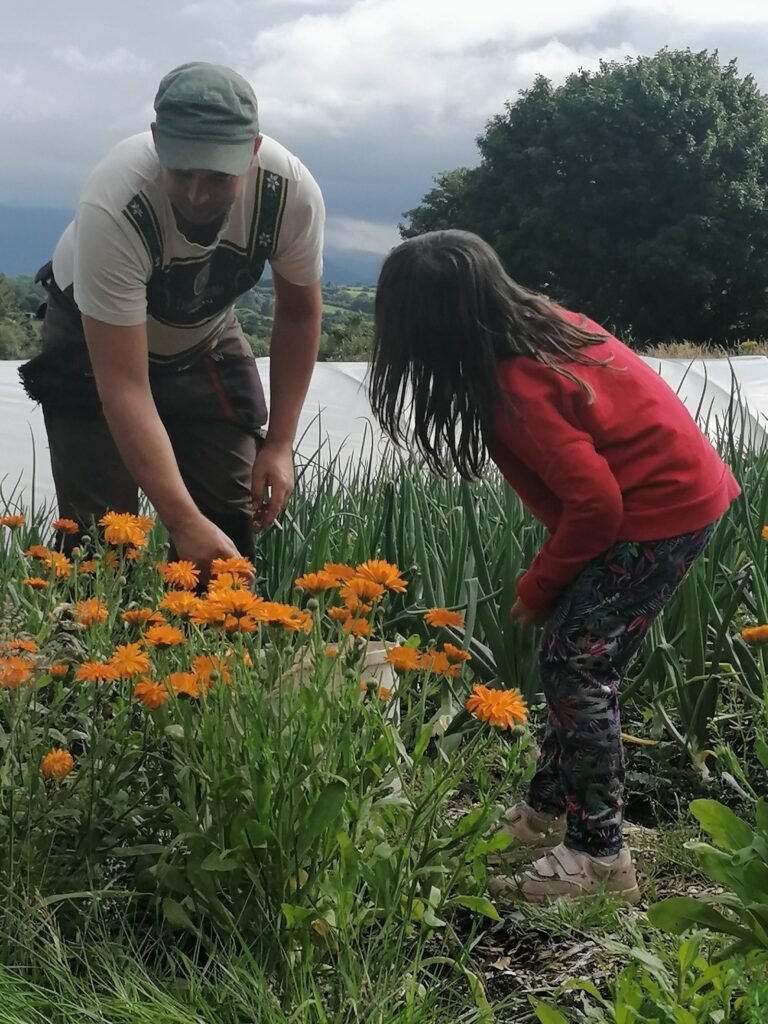
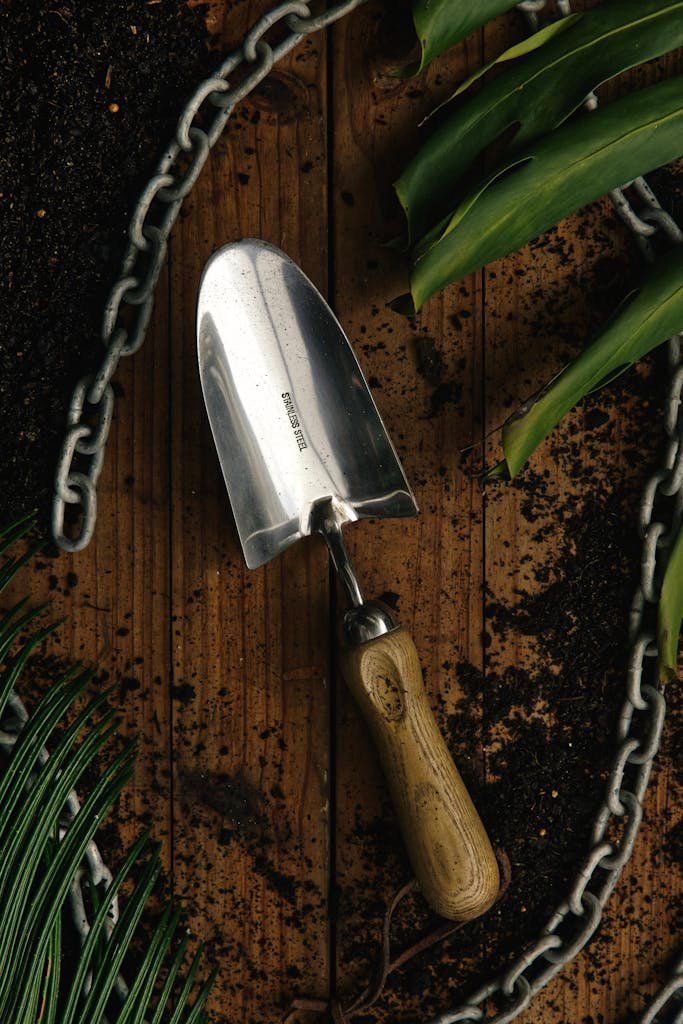
Managing Pests & Diseases
Calendula is tough as nails, but even the hardiest plants can run into pests and diseases now and then. The key? Spotting issues early and acting fast!
Pesky Pests & How to Handle Them
Calendula’s bright blooms are a pollinator’s paradise—but sometimes, uninvited guests show up. Here are the usual suspects:
- Aphids & Spider Mites → Tiny sap-suckers hiding under leaves, causing curling or yellowing foliage.
- Thrips → Leave behind speckled damage as they munch.
- Caterpillars → Hungry leaf-chewers that leave holes in foliage.
Your All-Natural Defense Plan:
- Blast them away! A strong spray of water knocks off aphids and mites.
- DIY bug control: A gentle insecticidal soap spray—or grab this ready-to-use organic insecticidal soap for an easy fix!
- Bring in the reinforcements: Release ladybugs, lacewings, or parasitic wasps—nature’s pest control squad!
Common Calendula Diseases & How to Treat Them
Most calendula woes come from too much moisture and poor airflow. Watch out for:
- Powdery Mildew → White, powdery patches on leaves and stems. Prevent it with good spacing + dry foliage. Already got it? Treat it with a baking soda spray or grab this neem oil—a powerful organic antifungal!
- Botrytis Blight → Gray, fuzzy mold. Remove affected leaves and boost air circulation.
- Alternaria Leaf Spot → Dark brown or black lesions. Remove infected leaves and consider an organic fungicide if needed.
Stressed-Out Plants? Here’s What to Do!
If your calendula is wilting, yellowing, or not blooming, it might need:
More sun (Aim for 6+ hours daily!)
️Better watering habits (Keep soil moist, not soggy.)
Extra nutrients (A light compost top-up works wonders.)
The Bottom Line?
Stay one step ahead of pests and diseases, and your calendula will thrive all season long—with minimal effort!

Harvesting Calendula: Sunshine in Your Hands
There’s something magical about harvesting calendula—like gathering little suns from your garden. The best time? Morning, after the dew has lifted but before the heat of the day settles in. Snip the blooms just below the flower head using sharp pruners (no tugging—let’s keep things graceful).
Drying and Storing: Keeping the Glow All Year
To preserve their golden goodness, lay flowers in a single layer on a clean surface, away from direct sunlight. A hanging dryer rack makes the process effortless—plus, it looks downright charming in a rustic, herbalist kind of way. In 5-7 days, they should be crisp and papery. Store them in an airtight jar in a cool, dark place, and you’ll have calendula magic at your fingertips all year.
From Garden to Skincare: A Pot of Gold for Your Skin
Dried petals steeped in olive or jojoba oil create a golden infusion packed with skin-loving benefits. It soothes, hydrates, and is basically a hug in a bottle. Want something ready-made? Our calendula balm takes all the hard work out of it—just open, apply, and glow.
Edible Sunshine: Cooking with Calendula
Calendula isn’t just pretty—it’s delicious. Sprinkle petals over salads, soups, and rice dishes, or steep them for a golden-hued tea. Feeling fancy? Crystallized petals make a stunning garnish for cakes and cookies.
With a little love and a few simple steps, you’ll have calendula’s goodness to enjoy long after the last bloom fades.


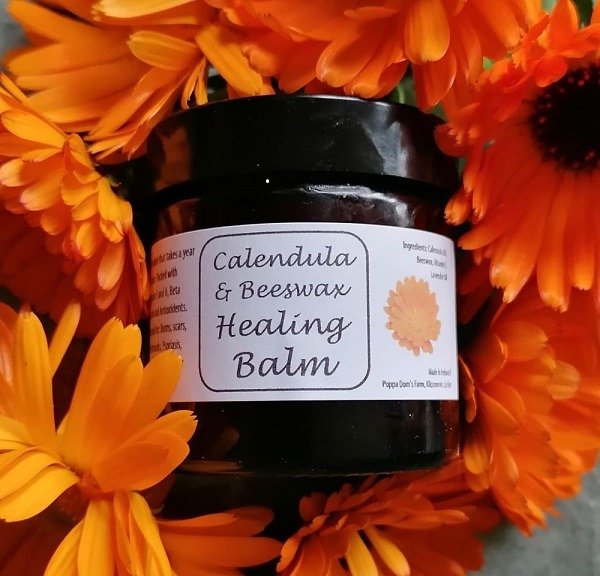
Propagation and Saving Seeds
One of the best things about calendula? It practically begs to keep growing for you! This flower is a dream for seed-saving and self-sowing, making it one of the easiest plants to reintroduce to your garden each season.
When the growing season winds down, let some of your healthiest, most vibrant flowers fully mature and go to seed. You’ll know they’re ready when the seed heads dry out, split open, and reveal curled, dark brown seeds.
How to Save Calendula Seeds Like a Pro
- Snip off the dried flower heads and place them in a breathable fabric bag or paper envelope (plastic traps moisture—no good for storage!).
- Label the bag with the variety and harvest date—future you will thank you!
- Store in a cool, dark, and dry location—a pantry or even the fridge works well.
- For best germination, plant saved seeds the following growing season.
Want a hands-off approach? Calendula also self-sows like a champion! Once those seed heads drop, you’ll likely see cheerful seedlings pop up on their own next spring—free plants with zero effort.
For even more ways to multiply your calendula patch, try dividing mature plants in early spring or taking stem cuttings in late summer. These methods create exact clones of your strongest, most prolific plants.
By taking advantage of calendula’s natural propagation tricks, you’ll have a never-ending supply of these golden blooms—year after year, with minimal effort.

Bringing It All Together: Your Calendula Journey
By now, you’re well on your way to becoming a calendula-growing pro. Whether you’re starting from seed, tending to lush blooms, or harvesting petals for herbal magic, one thing is clear—calendula isn’t just another garden flower. It’s a powerhouse of beauty, resilience, and healing.
From the first sprout to the last golden bloom, calendula is here to make gardening easy, rewarding, and downright fun. It thrives in a variety of conditions, bounces back from neglect, and asks for little in return—just some sunshine, well-draining soil, and a bit of love. And the best part? Once you plant it, calendula is happy to keep coming back year after year, either through self-seeding or a little help from your seed-saving hands.
But growing calendula is only half the story. This flower brings a full-circle experience—one that extends beyond the garden and into the kitchen, your skincare routine, and even your home apothecary. Whether you’re whipping up a batch of soothing calendula balm, brewing a floral tea, or tossing vibrant petals into your next meal, you’ll quickly see why this plant has been cherished for centuries.
So, what’s next? It’s time to get growing! Grab some calendula seeds, plant them in your garden (or a cozy container), and watch as they reward you with months of cheerful blooms. And when those first flowers open? Snip a few, make something special, and enjoy the simple joy of growing your own herbal goodness.
Calendula isn’t just a plant—it’s an experience, a tradition, and a reminder that nature always has something beautiful to offer.

